Education Software Development: Impactful Overview

Education software development for institutions is a daunting topic, so our experts gathered all the required information in one article, which made it feel like unravelling a well-worn tapestry. Whether your goal is to receive a solution for online classes, management, assessments, or else, read this review and learn the nitty-gritty behind technology usage for this niche.
From virtual classrooms, tracking tools, to automated grading and student-parent portals, there are no limits for edtech software development in assessing your requirements. We will consider core features you need, steps to build a platform, prices, and more.
The building process can be fast-paced and simplified, and we will leverage our background as a company that knows how to develop educational software across dozens of education software industry. So, if this is what you are looking for, stay tuned to our material. Let’s discover what e-learning stands for in terms of the new digital era.
What is educational software?
Such an easy term can be described as the software that facilitates operations for learning institutions, schools, private tutoring, and related businesses. In this straightforward definition — made by our experts — we hide a plethora of capabilities available for owners worldwide, and some of them we have introduced in the intro.
Referring to the piece of chapter of International Encyclopedia of Education (Third Edition) we found online, this term stands for “another form of curriculum delivered with digital technology,” and from the tech side, we consume that it’s they way for organizations to enhance their user experience, reach new height in the cut-throat industry, and impact the world of online learning.
From academic education to application for learning (anatomy, English, or else), there are ways to reach new levels by adapting to learners’ needs, market trends, accessibility requirements, better administration, and more as edtech software development companies do. Further, you will discover more about custom education software development which allows you to gain more customers and increase your presence in the e-learning niche.
What are the types of e-learning software?
Let’s start the topic by defining what you are actually able to receive from such a building project, and we would like to note that almost everything that is needed for your educational business or school. Sounds too good? It’s proven by thousands of online case studies and worldwide-recognized apps like Duolingo.
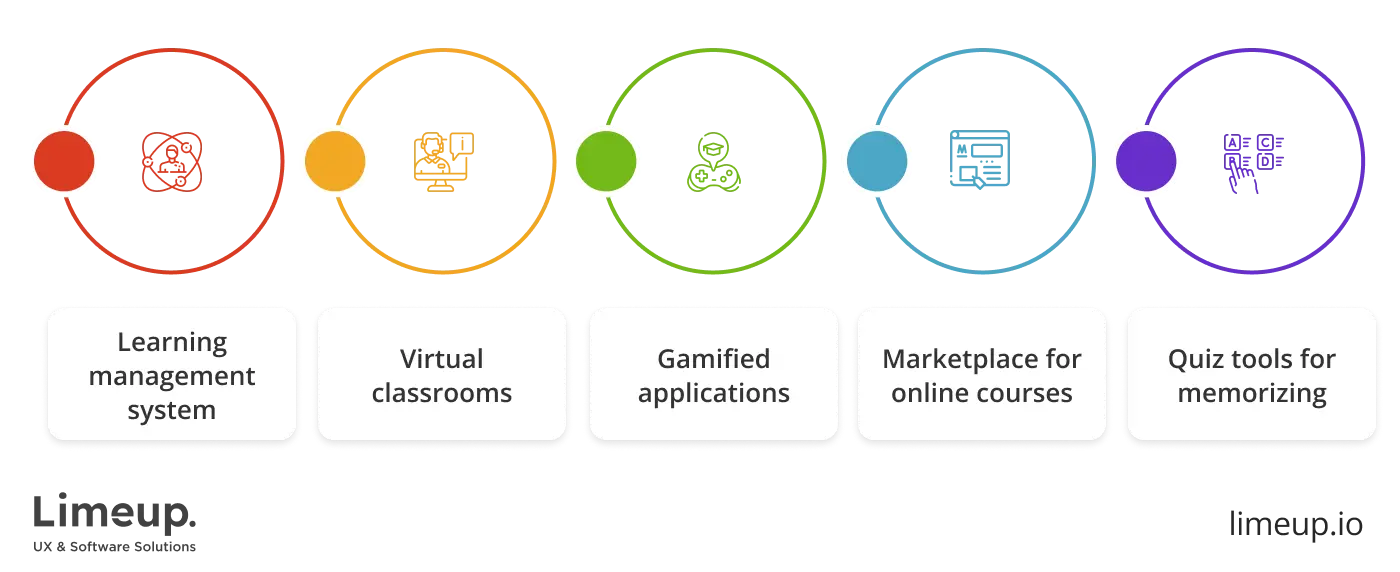
Still, the development is not limited to learning platforms, and here, we will consider the essential ones which are the most in-demand across firms all over the world (based on our background and online research).
-
Learning management system (LMS) is commonly used to train employees when the new software comes into the game, or when companies decide to onboard newcomers and gather all the information about administrative nuances and experience from other workers in one place.
Educational software developers are capable of creating customizable resolutions like Moodle which is popular amidst universities, used to upskill students, or it can be applied for professional career enhancement.
-
Virtual classrooms are a simple thing, probably, you imagined one name – Zoom — which is used for video calls for a group of people, whether it’s a company or school with the goal of communicating and learning synchronously. For example, we have used a few of them to partner with customers, remaining on the same page for short- and long-term projects.
Businesses can also receive an online app for webinars or conferences that will be stored on-premise, with enhanced protection and features like built-in chat, high-quality videos, screen and file sharing, etc.
-
Gamified applications are widely represented in the education market, simultaneously for in-firm activities and apps for learning. The statistics say that Duolingo received a 34% improvement in retention rates thanks to feedback that was gamified.
Moreover, there are other implementations of such modules, like leaderboards that boost motivation to accomplish another lesson and get a high rank, challenges that can be made with friends, the ability to connect with people worldwide, creating avatars, and more.
-
Marketplace for online courses is a trending solution, which gained more recognition as bloggers and private tutors decided to sell their study plans using Instagram, Facebook, and other social media. Simultaneously, custom education software development services allow you to build a website like Coursera or Udemy which contains thousands of guides on various topics.
It’s a type of business with constant income from subscriptions, but also can be used by agencies to scale up brand growth, for example, some agro companies or publishing houses develop their courses to become more recognizable.
-
Quiz tools for memorizing are aimed at customer engagement across robust support and opportunities for schoolers to learn terms and concepts with flashcards. It’s a pretty old method for medical students (for instance) who have to memorize hundreds of acronyms and abbreviations, symptom names, and more.
In this case, it’s about how digitalization allowed them to download an app which can be used offline, and study effectively while driving to university, academy, cooking, working out, or else. To truly understand the comprehensive capabilities of advanced e-learning systems, you should also discover all about Open edX, a robust open-source platform that powers many of the world’s leading online courses and learning initiatives.
Your choice of the proper type will fully depend on the objectives and purpose, target audience, budget capabilities (we will consider prices forward in this article), timeframes, capabilities of education software developers and other nuances.
Whether you select a platform for workforce training or mobile application building, you will definitely reach out to beneficial moments like flexibility and remaining competitive in other cut-throat niches.
Are you ready to determine the actual process of creating such a solution that will 100% cover your needs? You surely notice it’s not a walk in the park even for a tech-savvy person. Therefore, we have a comprehensive overview of the phases needed to accomplish such a time- and resource-consuming idea, so let’s dive right into the steps of development.
How to build educational software in 5 steps?
When you decide to create a reliable solution for educational needs, the consuming tasks to be done will make you go down a rabbit hole, that’s why our specialists leveraged their experience as a part of one of the leading London-based software development companies in this area to gather information about stages you need to take to do the project efficiently.

Let’s get into the big game and overview the long pace.
— Step 1. Comprehend educational demands.
We decided to write it down as here you need to determine your needs for software so that you don’t have to move the goalposts in the middle of the creation. The widest advice we can outline is to focus on your end-users — and yes, there will be an explanation.
Prioritizing personalization and covering the pain points of your target audience is not an option anymore but a vital part of your strategy for education software solutions development as according to an article by Louise Wylle, there are over 389k learning apps — you have to differentiate yourself with enhanced user experience and features (we will consider them later).
Here, it is also better to decide what modernized ways for studying you will implement, for example, the usage of AI for memory, gamification with progress bars, challenges with friends, microlearning — everything according to the customer’s research you need to conduct.
— Step 2. Set the tech stack.
The point of settling this nuance lies in the variety of products you are able to build, for example, an ERP or web/mobile application for learning Korean, Math, etc. With different purposes come distinctive programming languages and frameworks, but they can also have common ones, that’s why you need to research.
To build education software, you basically need to be proficient in Node.js or Python for back-end, React Native, Flutter or Swift for application, depending on your decision — iOS, Android, or hybrid, some DevOps tools like Docker.
— Step 3. Design and develop your platform.
Clean design and code are the backbone of every successful project, and with this in mind you can start coding and designing across UI/UX. Back-end and front-end will be built in association with technologies you determined in the previous phase, and we recommend focusing on databases, APIs, gamified elements, etc.
You will also integrate third-party apps and other nuances, code, code, and code some more, with security practices in mind too. This stage is one of the longest, for example, if you would like to receive an MVP, you can expect up to 4 months of creation, so stay tuned and engaged.
— Step 4. Test what you coded.
According to the research by IBM, the cost of fixing bugs on the maintenance stage may cost up to 15 times more so it’s preferable to resolve all issues during the outlined testing phase. Simultaneously, it increases reliability for accurate data storage, monitoring, management, and other functions.
You are able to conduct unit, end-to-end, automated and manual tests, all according to the type of resolution you create. Such a process is costly and requires QA experts if you are not the universal tech guru, but it’s better to not skip and find all issues before your users abandon the platform after experiencing them.
— Step 5. Go live and get attention.
In other words, you are ready to make your software accessible to users in the App Store, Play Market, or within a private network, ensuring it will perform like a stable and protected one. Then, you just need to monitor how it works, update regularly, make changes if needed, keep promoting it online if you created it for a wide audience.
For now, you are almost ready for the next project, with a comprehensive overview of every stage. Software development for education seems like a lot of work to do, but you are right, especially when it comes to deciding the functions you need, so stay tuned, and we will consider the core functionality that will enhance your operations.
What are the key features of edtech software development?
You have noted that specifications are a core factor for modules, and to discover some common between them, you need to get deeper into each type of solution. Our professionals lend you a helping hand with this part of the article, defining common features which are aimed at improving customer engagement and experience, learning methods, facilitating management for teachers and students, or their parents.
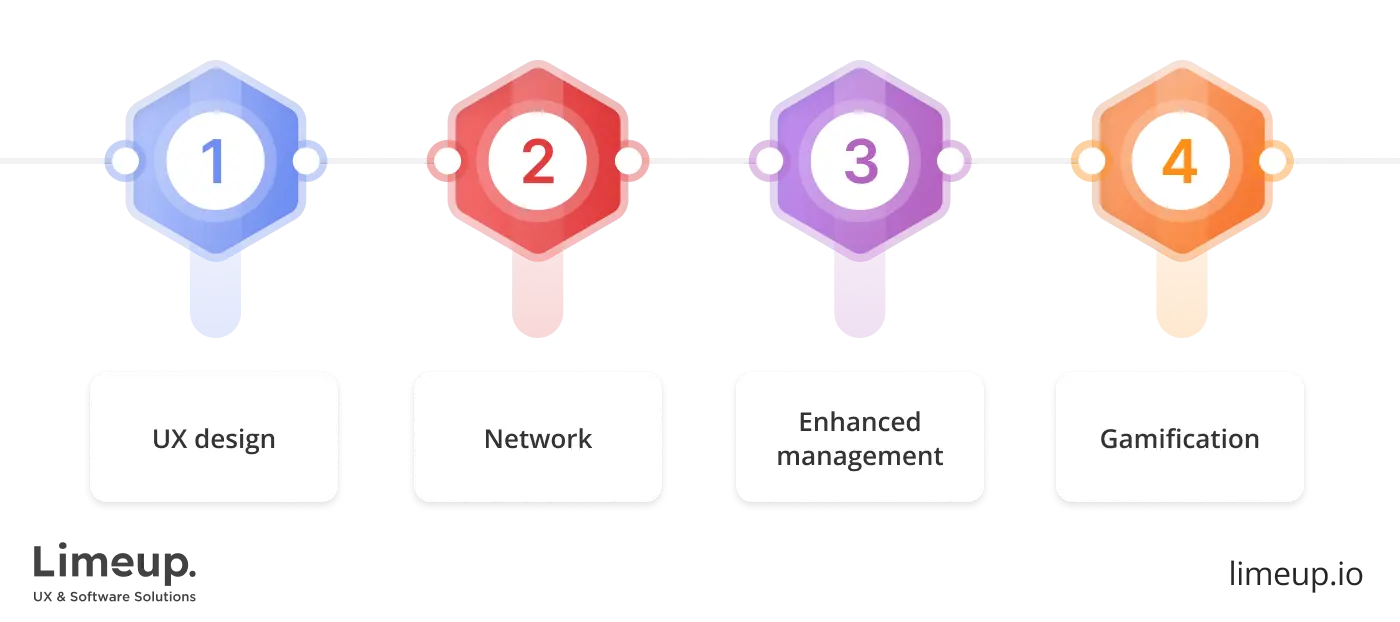
Here, you will get familiar with killer functions that are available through edtech software development services, which feel like one-two punch for every solution for education niche:
-
UX design is a firecrack move. Why is it such a profitable investment? Because engagement of your users is what determines the success as even if they download your learning app, user experience will impact if they stay with you for years.
Moreover, the digital world is becoming more accessible for everyone (as it should in our opinion), so you have to ensure the program drives access to the studying itself, without the need to figure out every button’s purpose for hours.
-
Network tools are like caffeine for retention as well, as people would like to remain part of communication, keep motivation high, study with friends, find new learners with the same goals, and more.
For example, recently study groups have become a game changer, allowing students to focus on their papers for hours with others. There are numerous websites, like StudyStream, that offer around-the-clock studying streams for worldwide users. They give a free hour per day to stay on streams, and people pay additionally to receive more hours.
Developing educational software with such capabilities is a jackpot for businesses and organizations, as they are able to present collaborative approaches for end-users.
-
Enhanced management can’t be ignored as a masterstroke of planning, to put it simply, an allowance to store all the data in one place, with online and offline access (if possible and needed). To showcase the practical side, universities have group projects for students, such as economic research, and such a feature is a notable innovation for organizations.
If your target audience is private tutors, you are capable of providing them with a function that is built according to role-based architecture, with storage of tests, students’ personal information, payment details, and more.
-
Gamification is a polished execution proven by cold facts — the global gamification market in the education industry is predicted to reach $14.3B by 2030. There are a plethora of ways to accomplish it — from storytelling by virtual characters for better engagement to challenges with friends.
We have considered only the core ones, as the final choice depends on your demands, end-users’ preferences and their pain points to be covered.
How much does education technology software development cost?
It’s a tricky question that can be answered only by an education software development company that has experience working with such platforms, and luckily, our experts are here to break down the average price:
| Type* | ~$ |
| Mobile application | $30,000–$100,000+ |
| LMS | $50,000–$150,000+ |
| Courses platform | $80,000–$120,000 |
| Online classroom web/mobile platform | $60,000–$120,000+ |
| Gamified website | $50,000–$100,000+ |
*These are some of the purposes which can be satisfied with creation services but the list of them differentiates according to your needs and vendor’s capabilities.
The budget limits determine what you will receive, as complexity of your module has the highest impact on final price (because some advanced features like AI-based educational software development services require more resources).
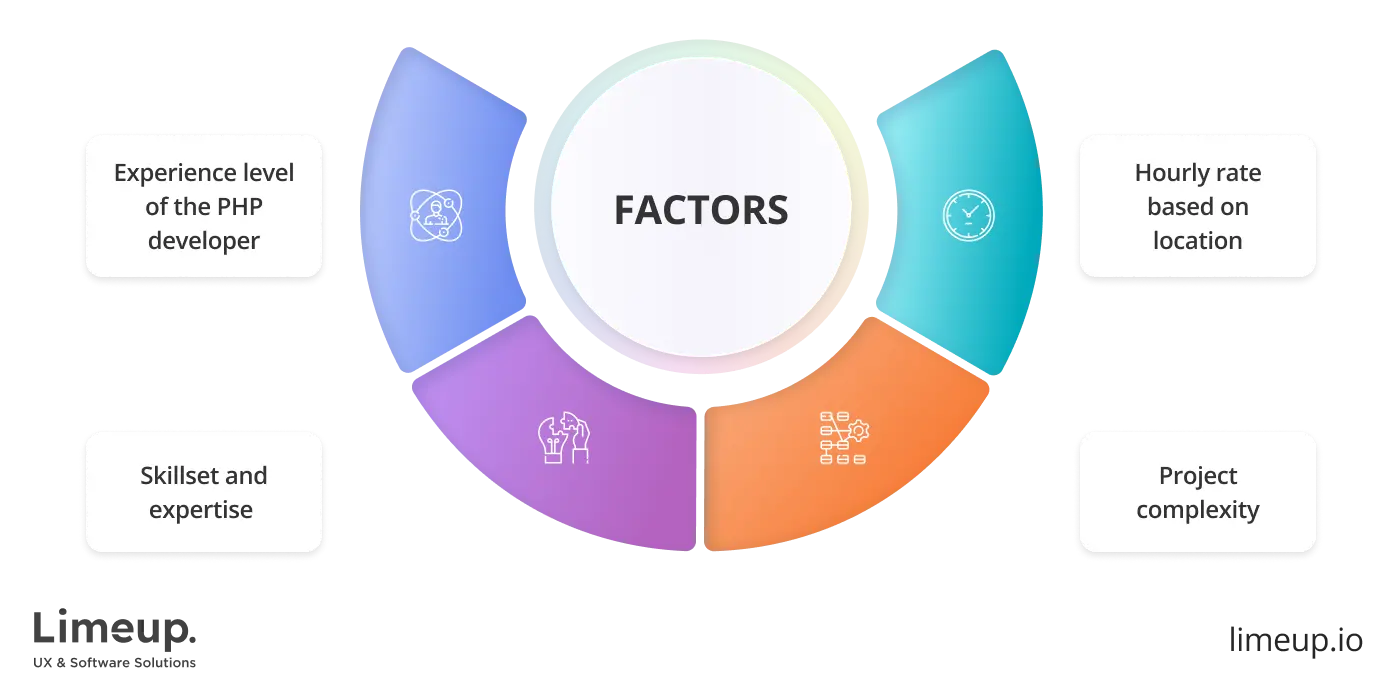
You also have to consider security nuances, compliance demands, sophisticated back-end, third-party integrations, ongoing maintenance, and more. For brands on a budget, there’s an opportunity to create an MVP with basic functions and test them with users to define if it will be actual for the market, and not a waste of money.
Our recommendation is to contact coders of your choice, for example, you can find a dedicated developer for hire or a crew, and pre-define the final price before starting a cooperation. Typically, such calls are free, and if you select the platform from the list we mentioned, many marketplaces provide full-fledged help according to your requirements.
How to opt for a vendor to develop educational software?
The number of providers is booming, making you feel overwhelmed with the number of candidates, especially when you just click on a Google page and write, “educational software development company”, drawing in thousands of pages to be checked. So what’s the core point that will simplify the search?
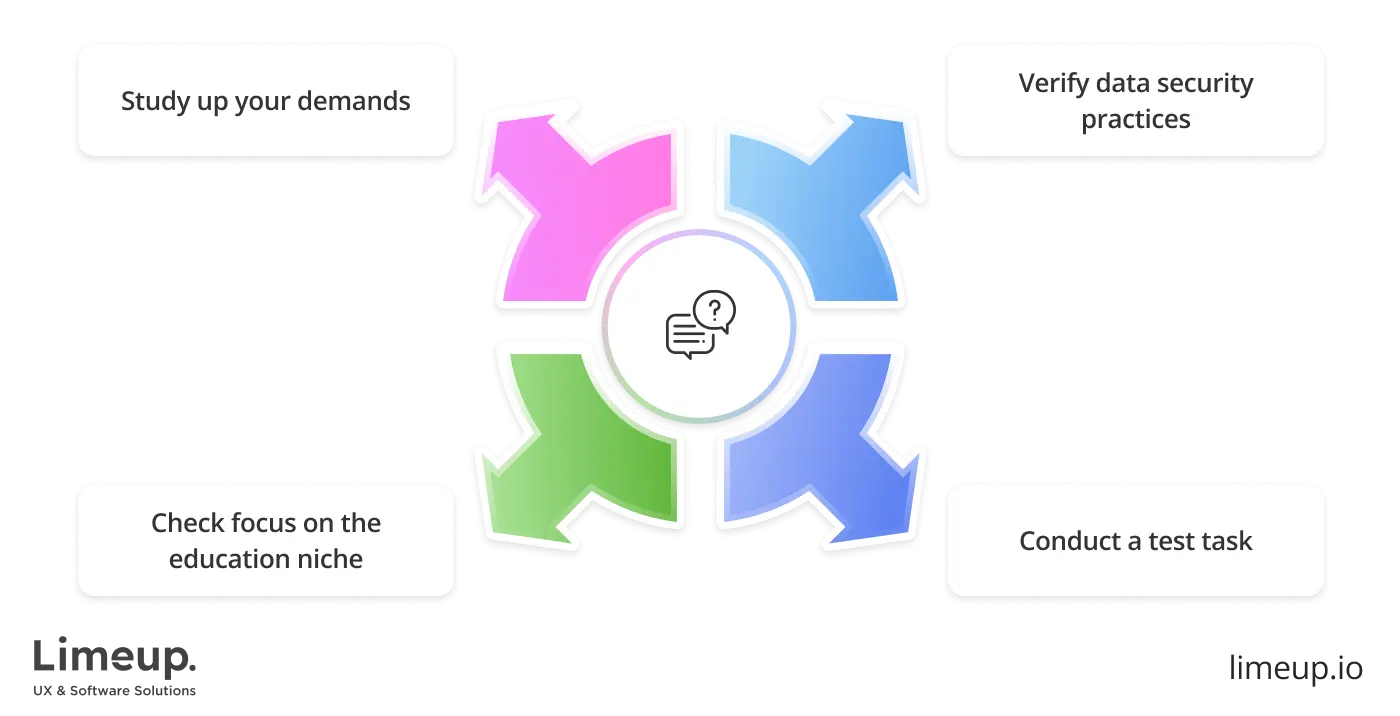
Our specialists have over a decade of experience cooperating with businesses worldwide, gathering their background in a convenient process, with cold, hard facts instead of blurry explanations. Here are four steps to accomplish and select a reliable software house:
— Study up your demands.
As you will apply for long-term cooperation that also requires your commitment and money investment, it’s better to determine why you need a solution, what pain points it has to cover, for example, if you want to handle more students with efficient management, or remove performance issues to keep users engaged.
Also, we recommend assessing UX and UI needs of your end-users (whether they are teachers, students, parents, etc).
— Check focus on the education niche.
Specialization is not a nice-to-have but a must-have option when hiring backend developers. Talking about this, we mean that your area is not a common one, as well as your school or institution, and our recommendation is to ensure that coders have experience working with related case studies.
You can check it on your own, browse through their websites, or ask during an initial interview.
— Verify data security practices.
To create education software that will be future-proof, it’s preferable to collaborate with a firm that encourages data protection for every code line, moreover, it has to be aware of compliances like GDPR or other requirements that are required for your jurisdiction.
Why is it vital? — You can store information about students/teachers, personal and sensitive, which is better not to get stolen in order to protect customers’ loyalty and your reputation.
— Conduct a test task.
We have noted above that background is essential, that’s right, but if you would like to apply for services from a newcomer in the development field and not a battle-tested one, you can ask to take a pilot test and tech interview to check their capabilities.
After these stages, you don’t need to be on the back burner and start communicating with vendors. You can also check the pre-vetted agencies using lists like our software development companies in London for more convenience.
What are the trends in educational software development?
This niche feels like a sprint, but according to our background and projects developed, it never ends, and to remain competitive, you need to adjust to tendencies. Here, we will provide an overview of some of the in-demand ones, which our coders also implemented, to share a real-life experience.
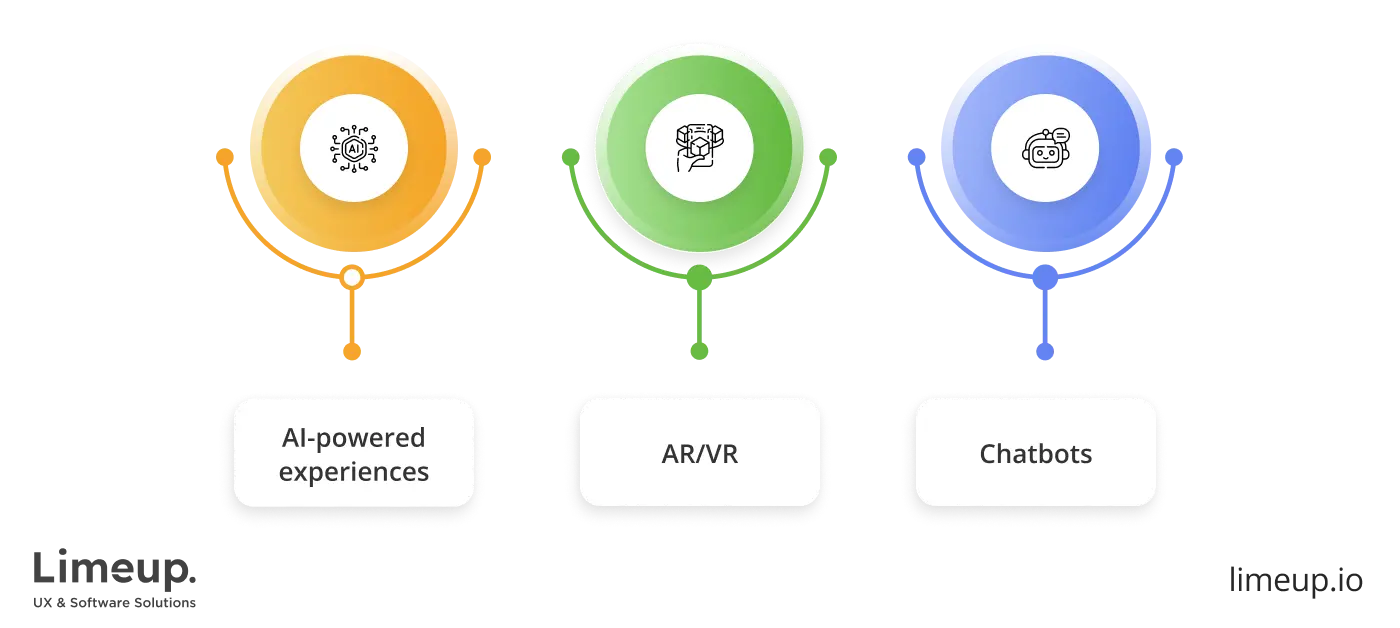
Note: all of them are about the engagement of end-users as they are deciding to let your app take place in their devices (if you create a learning environment for monetization).
You can implement AI-powered experiences in ways that cover personalization, content creation, advanced analytics, and others. Some businesses refer to AR/VR, which can be accessed by many users of virtual reality across Apple Vision (as an example), playing 3D games, and more.
Chatbots (which also can be based on artificial intelligence) are widely represented in custom educational software development and emerging, for instance, the app for learning Korean through chat called Eggbun gained 1M downloads, with average rate of 4.5 on AppStore.
The decision to add any tendencies depends on your needs, and it is also advisable to refer to step 1 in the creation process and outline which one will be profitable and in demand for your target audience.
Wrapping up
After reading our guide, you will not find yourself running out of steam as you are equipped with all the information and practice tips to create plug-and-play software or hire specialists who will take on all the tech side work.
While the material describes the education-based solutions-building process, it subtly hints at the hidden opportunities to facilitate your work process if you are not a tech guru or don’t have the ability to keep an in-house team of coders on the payroll. You have discovered precise steps for choosing a vendor who will cover all your business needs.
If you would like to pave the way for receiving a solution of your choice, it’s advisable to collaborate with a software house that has experience with education software development services, a robust crew of programmers, and is proficient in a reliable tech stack. Consider contacting Limeup as we have already delivered 200+ projects, leveraging our 10+ years of experience.
Schedule a free call, and we will reach out to you to discuss your requirements within an initial consultation. Let’s team up for your next-level resolution.

